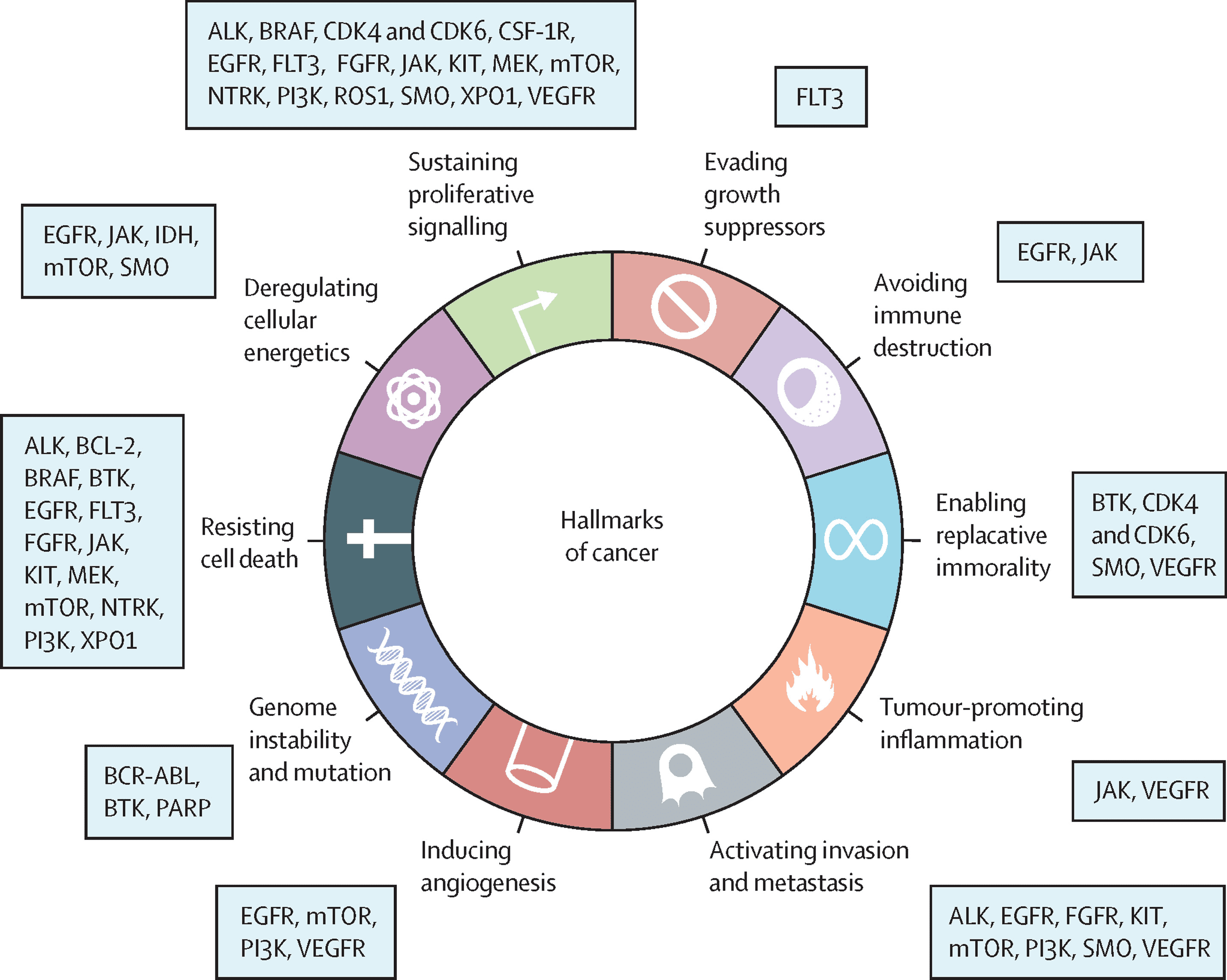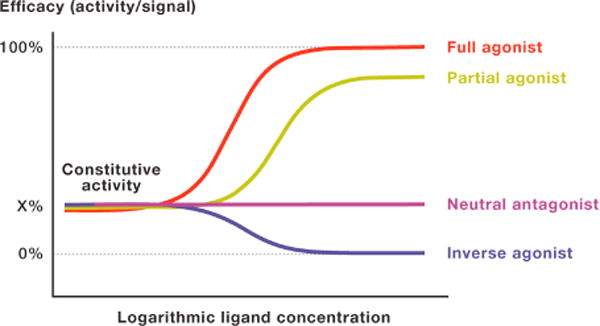Small Molecule Drug Screening Service
Small molecules predominantly modulate the activity of their protein targets. The majority of approved small molecule inhibitors target intracellular kinases, which regulate cell signaling by transferring phosphate groups to target proteins. Contemporary research extensively focuses on targets implicated in protein-protein interactions, cancer metabolism, and immune regulation.

Figure 1. Targets of Approved Small Molecule Inhibitors [3]
Based on the functions exerted by small molecule compounds, they can be classified into full agonists (ligands that evoke maximum signaling response in the queried pathway), partial agonists (ligands that induce activity less than the maximum level), inhibitors (ligands that inhibit constitutive receptor activity), and neutral antagonists (ligands that bind to receptors without affecting constitutive receptor activity), among others.

Figure 2. Schematic of Receptor Agonists, Antagonists, and Inverse Agonists [4]
The protein targets of small molecule compounds mainly include enzymes, ion channels, and receptors. Depending on the type of target, small molecule compounds exhibit diverse functions.
1. Targeting Enzymes
Small molecules acting as enzyme inhibitors bind to enzymes, reducing their catalytic activity. Based on the mode of binding to enzymes, inhibitors can be classified into irreversible and reversible inhibitors. The former binds to enzymes covalently, rendering the inhibition of enzyme activity irreversible. In contrast, reversible inhibitors bind to enzymes through non-covalent bonds (such as hydrogen bonds, hydrophobic interactions, etc.), a form of binding that does not involve a chemical reaction and can be removed by dilution or dialysis, making the inhibition of enzyme activity reversible.
2. Targeting Ion Channels
Ion channels allow specific ions to pass through the cell membrane, triggering certain biological responses. These mainly include voltage-gated channels (e.g., Ca2+ channels, K+ channels, Na+ channels, Cl- channels) and ligand-gated channels (channel-type receptors, such as GABA receptors, 5-HT receptors, Ach receptors, etc.). Typically, ion channels require specific stimuli to control their opening and closing. Certain compounds serve to obstruct the opening of ion channels, thereby functioning as ion channel blockers.
3. Targeting Receptors
Under normal circumstances, receptors are activated upon binding with their ligands (signals), further transmitting the signal and thereby inducing certain biological phenomena. Some compounds can bind to receptors, mimicking the action of the ligand and activating the receptor, thus acting as receptor agonists. In the presence of agonists, antagonists counteract the agonistic action on receptors, with antagonists alone having no effect on the receptor. Inverse agonists exert effects opposite to those of agonists. Some receptors (e.g., G protein-coupled receptors) may exhibit a certain level of baseline activity even in the absence of ligand activation, and the role of inverse agonists is to inhibit this baseline level of receptor activity.
The screening process for small molecule drugs includes: identifying the target, obtaining candidate compounds through various high-throughput screening methods, and further analysis to validate and eliminate false positives. Validation methods include: characterization of small molecule-target protein interactions, determination of binding kinetics parameters, and the structural characterization of specific interactions, as well as efficacy validation at the cellular and animal levels.

Figure 3. Small Molecule Drug Screening Process [5]
References
[3] Bedard PL, Hyman DM, Davids MS, Siu LL. Small molecules, big impact: 20 years of targeted therapy in oncology. Lancet. 2020 Mar 28;395(10229):1078-1088. doi: 10.1016/S0140-6736(20)30164-1. PMID: 32222192.
[4] Wacker D, Stevens RC, Roth BL. How Ligands Illuminate GPCR Molecular Pharmacology. Cell. 2017 Jul 27;170(3):414-427. doi: 10.1016/j.cell.2017.07.009. PMID: 28753422; PMCID: PMC5560499.
[5] Choi S, Choi KY. Screening-based approaches to identify small molecules that inhibit protein-protein interactions. Expert Opin Drug Discov. 2017 Mar;12(3):293-303. doi: 10.1080/17460441.2017.1280456. Epub 2017 Jan 20. PMID: 28067063.
How to order?







